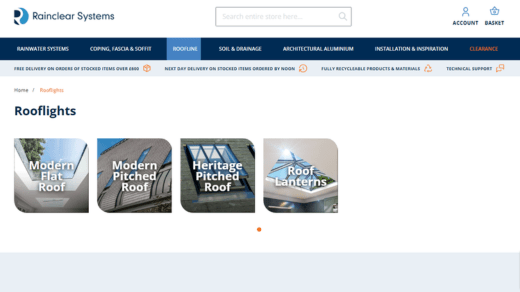In the realm of architectural preservation and sustainable design, conservation rooflights play a pivotal role in bridging the past with the future. These specially designed rooflights offer a unique blend of aesthetics, functionality, and environmental responsibility. In this 500-word SEO article, we will delve into the world of conservation rooflights, shedding light on their significance, benefits, and the pivotal role they play in architectural conservation.
What are Conservation Rooflights?
Conservation rooflights are a specific type of skylight designed to maintain the historical integrity of a building while maximizing natural light and energy efficiency. These rooflights are often used in the restoration or preservation of historic structures, ensuring that the architectural heritage is retained, and natural daylight is introduced into the interior spaces.
Preserving Architectural Heritage:
Conservation rooflights are a vital tool for preserving the historical significance of buildings. They are meticulously crafted to blend seamlessly with traditional architectural styles, such as Victorian or Georgian, maintaining the visual appeal of heritage structures. This delicate balance between past and present makes them a go-to choice for architects, ensuring that the aesthetic integrity of a building is maintained.
Maximizing Natural Light:
These rooflights are designed to allow an abundance of natural light to filter into the interior spaces, reducing the need for artificial lighting and improving the overall quality of life for occupants. This not only enhances the visual appeal but also contributes to energy savings.
Energy Efficiency:
Conservation rooflights are built with energy efficiency in mind. They are often double or triple glazed to provide insulation, reducing heat loss and making buildings more energy-efficient. This eco-conscious approach aligns with the global push for sustainability.
UV Protection:
To protect valuable interior elements, such as artwork and furnishings, from harmful UV rays, conservation rooflights are equipped with specialized glazing options. This feature ensures that historical artifacts and interior spaces remain safe from sun damage.
Ventilation and Access:
Some conservation rooflights are designed to be operable, allowing for both natural ventilation and occasional access to the roof. This functionality adds to the overall comfort and functionality of the building while adhering to preservation requirements.
Compliance with Regulations:
Conservation rooflights are often designed in accordance with local and national preservation regulations. This ensures that the installation of such rooflights won’t compromise the historical value of the building, addressing concerns regarding architectural heritage.
Conclusion
Conservation rooflights are more than just a source of natural light; they are a bridge between history and modernity. Their ability to blend seamlessly into historical buildings while enhancing energy efficiency makes them an invaluable tool for architects, conservators, and property owners alike. By choosing conservation rooflights, one can illuminate the past while protecting the future of our architectural heritage.
In summary, the keyword “conservation rooflights” represents a critical aspect of architectural conservation and sustainability. These specialized rooflights are the perfect solution for preserving historical structures, maximizing natural light, ensuring energy efficiency, and complying with preservation regulations. With conservation rooflights, the past is not just preserved but also enhanced for a brighter, more sustainable future.
For more information, check out Rainclear Systems

